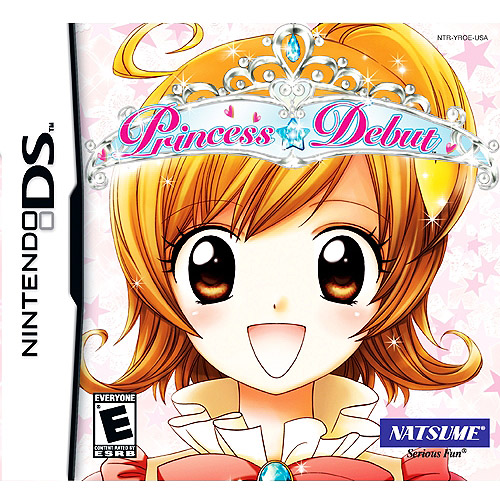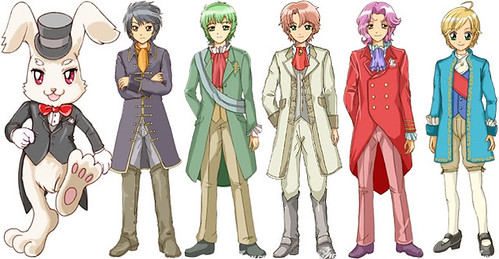Title: Ratchet and Clank: All 4 One
System: Playatation 3
ESRB Rating: E 10+
Number of Players: 1-4 player co-op, online capabilities
Buy It: Amazon |
GameStop |
By this point, everyone is sick of me talking incessantly about how much I love
Ratchet & Clank. Well, call me honey badger because I don't care. I've been a fan of the
Ratchet and Clank series since its launch in 2002. With each of the main games that came out, I liked the series even more. It was a mix of insanely bizarre weapons, an engaging story, completely loveable characters, and modern platforming (done right!) that drew me to the series in the first place. Even as the series evolved and moved onto the PS3, I still loved the series. I even enjoyed (thoroughly) the spinoffs
Size Matters and
Secret Agent Clank, despite their flaws.
So, despite the fan attack, I'm going to say this right out in the open, unashamed: I thoroughly enjoyed the shit out of
Ratchet and Clank: All 4 One.
I know, I know. Fans of the series typically hated this game because it deviated from the
R&C norm that we've come to expect from the series. But that was part of what really drew me to it: it was different than what I'd come to expect, and for the first time, I could play a game from this series with another person. Or, as luck would have it, a group of people. (I wasn't lucky enough to have anyone to play
Deadlocked with me as a kid.)
The story isn't quite as deep as I've come to expect from a
Ratchet and Clank game. We're greeted with a beautifully-rendered cutscene of Ratchet and Clank escorting Qwark to an awards ceremony that seems (to our titular heroes) to be a fishy. When they finally get to the podium that's been set up for Qwark, it's revealed that Nefarious is the villain behind the "ceremony," and our heroes prepare themselves for a Class-A beatdown. Unfortunately for Nefarious, he gets caught up in the chaos unleashed by his own plan
and gets himself abandoned by Lawrence, leaving him to work with Qwark, Clank, and Ratchet. They all then get captured by the
real threat, and the four of them have to work together while they await rescue from Cronk and Zephyr.
A lot of the complaints that I've read about the game talk about how it's not really a "co-op" game because you're working against your teammates as much as you're working with them. That's true, so my friends and I affectionately call these kinds of games "competitive co-op" games. It's the same kind of classification we give to
Castle Crashers. As much as you'll be working with friends to complete puzzles and unlock doors, you'll be competing for bolts (the
R&C universe's currency) and critters, cute little creatures that unlock bonus puzzles. If your friends are already competitive by nature, then this is already right up your alley. The winner at the end of the round gets a bonus in bolts, and every character gets a title after the battle. (For example, if you collected the most bolts, you'd be the Bolt Master, whereas if you died the most, you'd get the title Noob.)
One of my biggest qualms with the game doesn't lie in the "co-op vs. not co-op" debate, but in the fact that you can't level up your weapons like fans have grown accustomed to over the course of the series. You have to buy your upgrades instead of earning them, and sometimes, the upgrades really don't feel worth the bolts I have to pour into them. The other is that, while you can play the game by yourself, the AI that you get paired up with isn't always smart enough to get the hint. Sometimes, it gets caught and runs itself into circles while driving the player character crazy.
Other times, working with other players isn't much better. The range for working on the level is very narrow, making it frustrating for someone in the party to go back and get something when everyone else is trying to move forward. Other times, someone's clumsiness causes everyone else to commit mass party-suicide when they slip off of a hookshot point or when they pull someone off the edge while they try to tether forward to the rest of the party. And on grind rail levels, try to make sure whoever is playing as Quark stays in the back, because he's almost impossible to see around. The other characters - even Nefarious, despite his height - are narrow and easy to see past, but Quark is a wall of body mass. Most of these things are overlooked, though, while we're busy laughing at each other for being so unbelievably stupid. (Not that thing about Quark, though, we all really hate that guy.)
The weapons system is difficult at times, as well, especially when not working with the AI. Players can choose which of their weapons to use, and while that's great most of the time, damage bonuses are awarded when two or more players use the same weapon against an enemy. Many times - especially against bosses - that damage bonus is the deciding factor between winning the battle and resurrecting your friends. But unless you and your teammates are really good at guessing each other's movements and weapon preferences, it's easy to get caught up in using nothing but your blaster. That's a shame, because some of the other weapons (I'm looking pointedly at the Frost Cannon and Warmonger, here) are absolutely devastating against enemies when used wisely, and become indispensable later in the game.
Overall, the game isn't as bad as some members of the fanbase want you to think it is. It's entirely too short (we've blown through the entire story in an afternoon) and some of the things we have to go through don't feel worth it for the payout, but we've each found a character we love using and when we don't have anything better to do, we automatically default onto All 4 One. If you've liked the rest of the games in the series, but you'd like a multiplayer option, then you really can do worse than this game.
Bottom Line: Certainly co-op, but competitive co-op. Awkward camera angles and character sizes make some levels really difficult, but overall not a bad experience.
Final Score: 8/10























